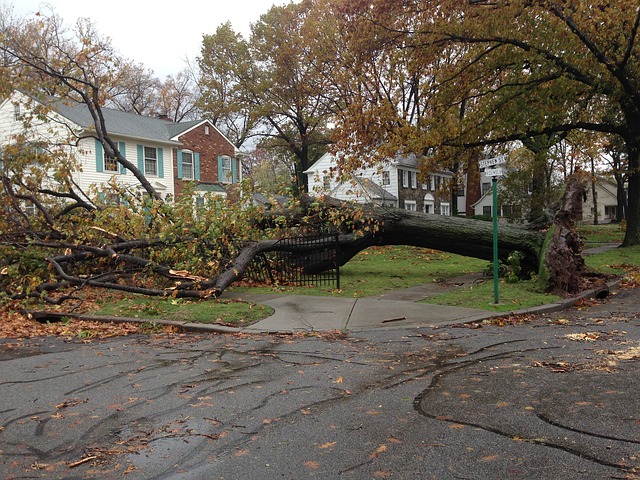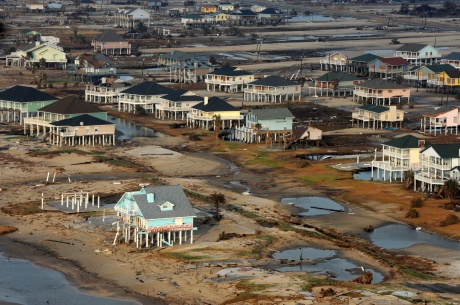Five months after Superstorm Sandy, the recovering northeast region continues to debate whether to rebuild in the most vulnerable coastal areas or whether to retreat and leave those lands as protective buffers. A decision to engage in managed retreat would face significant legal, political, and practical challenges, but, according to a panel convened at Columbia Law School on March 28, there are regulatory and policy actions that could make it possible.
The program was chaired by Michael B. Gerrard, Andrew Sabin Professor of Professional Practice and Director of the Center for Climate Change Law.
Peter Byrne, a professor at Georgetown Law School and Faculty Director of the Georgetown Climate Center, identified five key regulatory steps that state and local governments could take to discourage or remove coastal development in vulnerable areas. One strategy is to condition building permits on the structure meeting certain safety standards, such as minimum elevation or distance from the water’s edge.
Another would be to prevent armoring. “If you prevent armoring, then retreat will happen,” Byrne noted. If homeowners are prohibited from building sea walls, flood barriers, and other hard armoring devices, then sea level rise will inevitably approach coastal buildings and eventually make retreat a necessity. Armoring causes harm to neighboring lots, by changing wave patterns and furthering erosion in un-armored areas. However, preventing armoring would invite litigation, especially in states where homeowners have a legal right to defend themselves against flood waters.
Insurance also has a significant role to play in encouraging managed retreat. “Insurance is one of the most misunderstood industries,” said Howard Kunreuther, James G. Dinan Professor of Decision Sciences and Business and Public Policy at the Wharton School of the University of Pennsylvania. Insurance, he said, provides an opportunity to incentivize preventive actions in advance of a disaster.
Unfortunately, most people do not recognize the value of insurance. Less than 30% of the homes damaged in Superstorm Sandy had flood insurance, even though many of the homeowners were legally required to have purchased insurance.
Kunreuther noted that homeowners often purchase insurance after a disaster but then stop the policy if they do not experience another disaster within a few years, believing it is a bad investment if they do not see a return. “We need to convey the message that the best return on insurance is no return,” Kunreuther said. “Be thankful that you have not had a loss.”
Kunreuther recommended that the National Flood Insurance Program (NFIP) alter its premiums to reflect the vulnerability of the property, provide assistance to homeowners currently living in vulnerable areas but not incentivize others to move to coastal areas, and institute multi-year policies to provide greater continuity. He also proposed a loan program from insurance companies that would provide homeowners with the capital and incentive to protect their homes against future damage.
Even with regulatory and insurance policy revisions, managed retreat in New York City remains a particular challenge because of the City’s density and the number of people that would need to find housing in alternative locations. Vicki Been, the Boxer Family Professor of Law at New York University School of Law and Director of the Furman Center for Real Estate and Urban Policy, calculated that the Sandy surge area covered 24% of the City’s land and more than 300,000 residential units.
If the City decided to retreat from the surge area, and to demolish the buildings in the surge zone, it would be particularly difficult to find housing for New York’s low-income residents. 42% of the renters who reported damage after Sandy have a household income of less than $15,000. According to Been’s calculations, 108,000 households with an income of less than $60,000 would be in need of housing, and only 43,000 units would be available in the appropriate price range in New York City. Where would the rest go?
New York would need to build, Been said, but “The capacity we’ve been developing in the City [for housing] happens to be where we would be retreating from.” 50% of the additional building capacity that resulted from Mayor Bloomberg’s re-zonings is in the Sandy surge area.
Despite these challenges, Anne Siders, a postdoctoral research fellow at the Center for Climate Change Law, noted that communities across the United States have successfully engaged in managed retreat, and there are lessons to be learned from their experiences. In case studies she presented from the Midwest River Floods, relocation played a critical role in the success of managed retreat programs.
In New York, the debate over managed retreat will need to focus as much on where the city will develop as where it will retreat.
The panel was co-sponsored by the Center for Climate Change Law and the Earth Institute of Columbia. A video recording of the panel and presentations will be available at www.columbiaclimatelaw.com.




